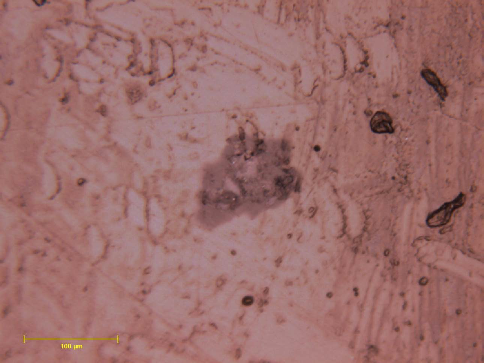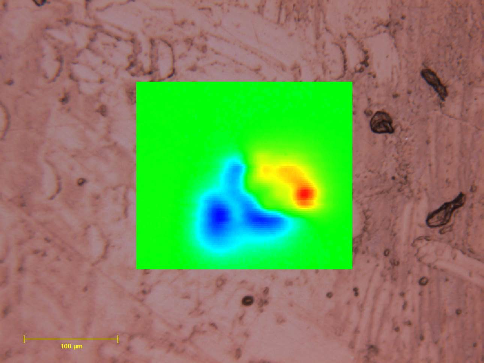MTJ microscope test data
Our MTJ microscope – the centrepiece of the nanopaleomagnetism project – recently arrived from Micro Magnetics in two large crates. Before the instrument is installed inside our shielded room at the beginning of April, CEO of Micro Magnetics Gang Xiao sent us these test images demonstrating the capabilities of the instrument. The first image is an optical image showing a ~ 100 micrometer sized grain of synthetic ‘dusty olivine’ embedded in epoxy. Dusty olivine contains thousands of sub micron particle of metallic iron, and is thought to be a potential carrier of pre-accretionary remanence in chondritic meteorites. The second image shows the Z component of magnetic field emanating from the grain. The scan was performed over 230*200 (X-Y) microns using the “vibrating” mode, whereby the sample is vibrated in the Z-direction in order to increase the sensitivity and eliminate sensor artifacts. Vibrating frequency was 135 Hz. Lock-in sensitivity was set at 500 micoVolt with a time constant of 1 second. Scanning speed was 1 micron/sec. The magnitude of the signal measured here is of the order of 250 nT, with noise levels indicating sensitivity of the order of a few nT. Internal details of the magnetisation pattern are clearly visible, with spatial resolution on the order of 10 microns. The results demonstrate exactly the capabilities we require for nanopaleomagnetism – the ability to measure remanent fields from localised regions of interest, and distinguish them effectively from adjacent areas.
As soon as the microscope is up and running, we’ll be looking for interesting projects to work on. If you think your work could benefit from this kind of measurement, please get in touch!




Leave a Reply